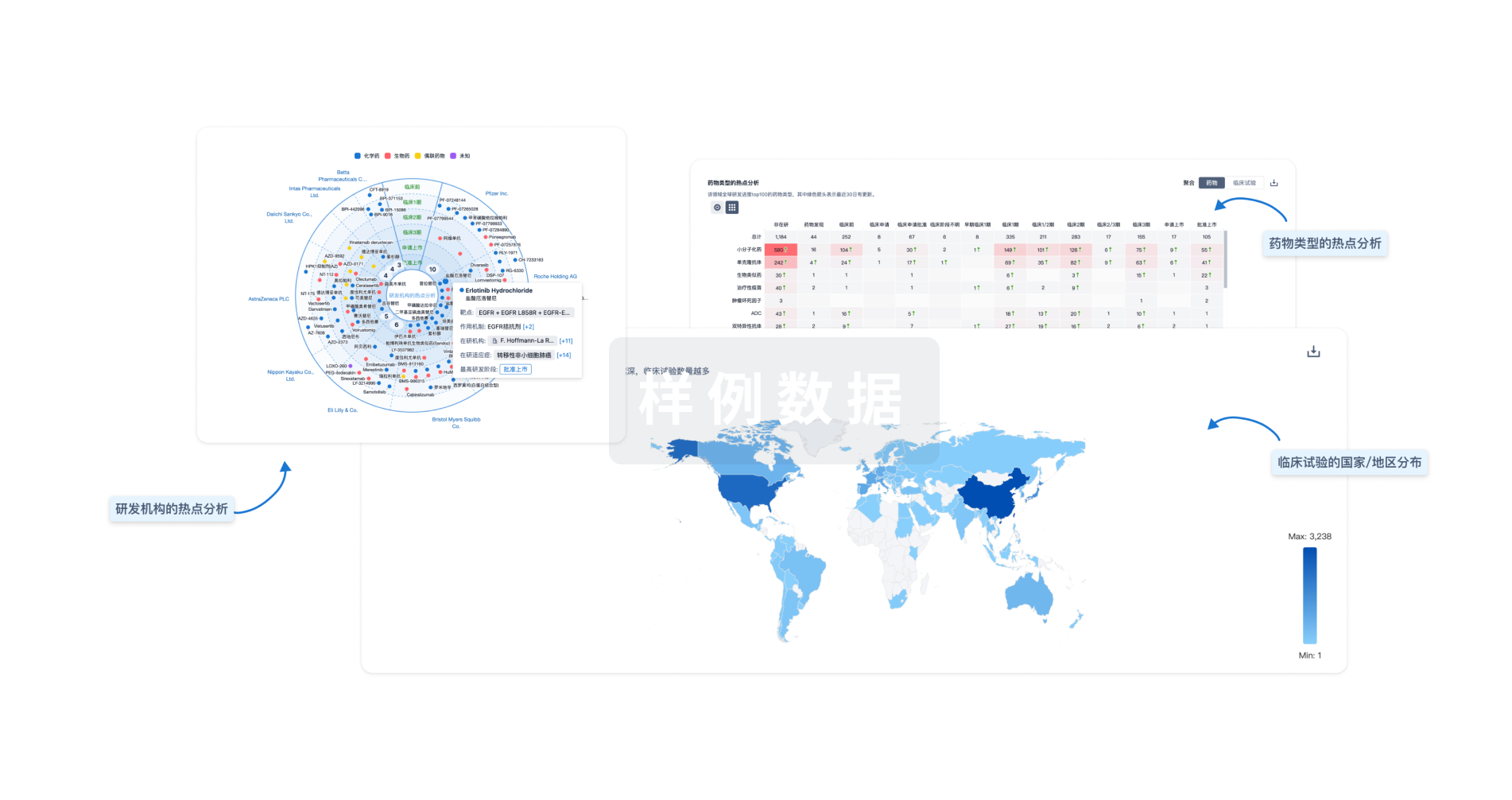预约演示
更新于:2025-05-07
Tinea Capitis
头癣
更新于:2025-05-07
基本信息
别名 Barbae, Trichophytia Profunda、Black dot ringworm、Capitides, Trichophytia Profunda + [58] |
简介 Ringworm of the scalp and associated hair mainly caused by species of MICROSPORUM; TRICHOPHYTON; and EPIDERMOPHYTON, which may occasionally involve the eyebrows and eyelashes. |
关联
9
项与 头癣 相关的药物靶点- |
作用机制- |
在研机构 |
原研机构 |
非在研适应症- |
最高研发阶段批准上市 |
首次获批国家/地区 中国 |
首次获批日期1996-01-01 |
靶点 |
作用机制 SQLE抑制剂 [+1] |
非在研适应症 |
最高研发阶段批准上市 |
首次获批国家/地区 美国 |
首次获批日期1992-12-30 |
靶点 |
作用机制 CYP51A1抑制剂 |
原研机构 |
非在研适应症 |
最高研发阶段批准上市 |
首次获批国家/地区 日本 |
首次获批日期1989-03-31 |
25
项与 头癣 相关的临床试验ChiCTR2500099485
A prospective study of the sampling method of tinea capitis under ultraviolet light/dermoscope: a polit study
开始日期2024-06-25 |
NCT06400056
Clinical and Laboratory Evaluation of Antifungal Resistance in Tinea Capitis
AIM OF WORK :
Detect the most common fungal strains that cause tinea capitis
Detect Different effectiveness of terbinafine in different cases
Detect the resistant strains.
Detect the mycological and the clinical cure rates upon using systemic terbinafine in treatment of tinea capitis
Detect the most common fungal strains that cause tinea capitis
Detect Different effectiveness of terbinafine in different cases
Detect the resistant strains.
Detect the mycological and the clinical cure rates upon using systemic terbinafine in treatment of tinea capitis
开始日期2024-05-01 |
申办/合作机构 |
IRCT20200516047462N6
The effect of gree natural dressing containing milk and propolis with honey on diabetic foot ulcers, bedsores and burns:A clinical trial
开始日期2024-03-25 |
100 项与 头癣 相关的临床结果
登录后查看更多信息
100 项与 头癣 相关的转化医学
登录后查看更多信息
0 项与 头癣 相关的专利(医药)
登录后查看更多信息
2,287
项与 头癣 相关的文献(医药)2025-04-01·Enfermedades infecciosas y microbiologia clinica (English ed.)
Dermatophytosis caused by Nannizzia gypsea: report of 155 cases from Western Mexico
Article
作者: Orozco-Yee, Enrique Adolfo ; Guevara-Gutiérrez, Elizabeth ; Tlacuilo-Parra, Alberto ; Mayorga-Rodríguez, Jorge ; Rojas-Castañeda, Raquel Guadalupe
2025-04-01·Mycoses
Emergence of Trichophyton tonsurans—A Retrospective Multicentre Study of the Dermatophyte Spectrum in Germany
Article
作者: Schaller, Martin ; Schauer, Franziska ; Köberle, Martin ; Pilz, Julia Felicitas ; Eyerich, Kilian ; Bamarni, Avend ; Zink, Alexander ; Sitaru, Sebastian ; Seidl, Hans Peter ; Lorz, Alexandra ; Biedermann, Tilo ; Pilz, Anna Caroline
2025-03-18·Skin Health and Disease
Recalcitrant tinea capitis in WHIM syndrome
Article
作者: McDermott, David H ; Strong, Jennifer ; Meltzer, Jasmine C ; Salancy, Abigail ; Castelo-Soccio, Leslie ; Adhanom, Rutha ; Murphy, Philip M ; Martinez, Sophia ; Brownell, Isaac ; Cowen, Edward W
8
项与 头癣 相关的新闻(医药)2024-11-15
FRIDAY, Nov. 15, 2024 -- The burden of superficial cutaneous
fungal infections
(SCFIs) among outpatient visits in the United States is high and increasing, according to a study published online Oct. 30 in the
Journal of the American Academy of Dermatology
.
Sarah L. Spaulding, from the Yale School of Medicine in New Haven, Connecticut, and colleagues characterized trends in the prevalence of SCFIs from 2005 to 2016 by analyzing ambulatory visits in the United States using the National Ambulatory Medical Care Survey and National Hospital Ambulatory Medical Care Survey.
The researchers found that from 2005 to 2016, there was an estimated average of 6,001,852 annual visits for SCFIs in the United States, with 72,022,226 visits during the study period. Of this total, 20.5, 12.2, 12.0, 6.7, and 6.0 percent were tinea unguium, tinea pedis, tinea corporis, tinea cruris, and tinea capitis, respectively. An estimated average of 1,104,258,333 annual ambulatory visits occurred in the United States from 2005 to 2016, with more than 13 billion visits overall; of all visits, SCFIs generally accounted for 0.54 percent. A significantly increasing trend in annual SCFIs was observed.
"These findings highlight the importance of health care providers being able to identify, treat, and, when necessary, refer patients with SCFIs, as a high burden of disease is associated with a significant negative impact on the individual and population levels," the authors write.
Several authors disclosed ties to the pharmaceutical industry.
2024-08-26
·药通社
开塞露龙头企业小方制药(603207)于今日8月26日正式登陆A股,上市板块为沪市主板,公司股票发行价格为12.47元/股。上市首日高开140.6%,开盘价为30元/股,总市值为48亿元。
小方制药成立于1993年8月12日,位于上海市奉贤区。公司前身为上海运佳黄浦制药股份有限公司,由中国香港运佳与上海五四制药厂共同出资设立。
公司的主营业务为外用药的研发、生产和销售,以“做好家庭常备用药,让小方制药走进千家万户”为企业宗旨,提供品类齐全、疗效稳定、质量优异的外用药。公司于 2002年创设并持续使用的“信龙”商标具有较高的市场知名度。
公司产品涵盖消化类、皮肤类和五官类等细分领域,其中,消化类产品主要包括开塞露、甘油灌肠剂等,可用于治疗便秘;皮肤类产品包括炉甘石洗剂、氧化锌软膏、硫软膏、解痉镇痛酊冻疮膏、复方薄荷脑软膏、尿素维巨乳膏、硼酸洗液、苯扎溴铵酊、白花油、水杨酸软膏等。可用于治疗皮炎湿疹、痤疮褥疮、跌打损伤、冻疮、晒伤烫伤、头癣、角质增生等多种常见疾病;五官类产品主要包括碘甘油、呋麻滴鼻液、氧氟沙星滴耳液等,可用于口腔溃疡、牙龈肿痛、牙周炎、鼻炎鼻塞、中耳炎等。其中开塞露、甘油灌肠剂、炉甘石洗剂、氧化锌软膏、水杨酸软膏、碘甘油、呋麻滴鼻液等产品市场占有率持续处于国内领先地位。
目前,小方制药共拥有药品批文 63 个,其中 12 个国家基本药物品规,28 个国家医保品种。
公司 2021-2023年分别实现营业收入4.02亿元/4.57亿元/4.72亿元,YOY 依次为11.22%/13.72%/3.28%;实现归母净利润1.26亿元/1.75亿元/2.04亿元,YOY 依次为-21.05%/38.74%/16.24%。最新报告期,2024H1公司实现营业收入2.62亿元,同比增加 0.69%,实现归母净利润1.19亿元,同比增加 0.72%。
2023年,公司主营业务收入按产品类型可分为四大板块,分别为消化类(2.53 亿元,53.58%).皮肤类(1.95 亿元,41.41%)、五官类(0.38 亿元,8.14%)、返利(-0.15亿元,-3.13%)。报告期内,消化类及皮肤类药品一直为公司业务收入的主要来源。
据华金证券新股覆盖研报,小方主要从事外用药的研发、生产与销售,选取同样从事外用药产销、且适应症领域与公司较为相似的马应龙、福元医药、仁和药业、华润三九、羚锐制药作为小方制药的可比公司。从上述可比公司来看,行业平均收入规模为 79.12亿元,可比PE-TTM(算术平均)为18.29X,销售毛利率为 54.44%;相较而言,公司的营收规模低于行业平均水平,但销售毛利率高于行业平均水平。
小方制药公司亮点:
1、公司立足于家用常备药,在开塞露、炉甘石洗剂等核心产品上处于国内领先。公司深耕家用常备药的研产销,自 2002年创设“信龙”品牌并使用至今,品牌旗下核心产品包括开塞露及炉甘石洗剂等,该两类产品使用人群广泛,市场份额均处于业内领先。由于公司主要产品为民众熟识度较高的家庭常备药、销售推广难度较小,因此公司销售费用整体保持较低水平,同时带动净利润率较同业表现略优。
2、公司积极投入复方透骨草溶液等新产品的开发,持续丰富产品布局。1)公司正重点推进与上海中医药大学附属岳阳中西医结合医院合作的复方透骨草溶液产品的研发申报工作,该药品为用于治疗手足癣疾病的“国家一类新药”,目前产品已在院端以院内制剂形式形成使用,治疗效果优、患者口碑良好。手足癣作为一种常见皮肤病,在人群中发病率约为15%,南方地区患病率更高达 50%~60%,且足癣复发率高,约84%的患者每年发作2次以上,对应药物或拥有较为广泛的使用人群基础、发展前景良好。2)公司拟使用募投资金对莫匹罗星软膏、双氯芬酸二乙胺乳胶剂等6款新品进行开发,有望进一步丰富公司产品布局。
参考:华金证券新股覆盖研究报告
投稿/内容沟通:华籍美人(Ww_150525)
近期精华文章
财报IPO
2024-07-06
转自:国家药监局 编辑:水晶
7月5日,国家药监局发布公告,萘替芬酮康唑乳膏和甲硝唑阴道凝胶由处方药转换为非处方药。
备案截至时间:请相关药品上市许可持有人在2025年4月2日前,依据《药品注册管理办法》等有关规定,向省级药品监督管理部门提交修订说明书备案。
根据《处方药与非处方药分类管理办法(试行)》(原国家药品监督管理局令第10号)的规定,经国家药品监督管理局组织论证和审核,萘替芬酮康唑乳膏和甲硝唑阴道凝胶由处方药转换为非处方药。品种名单(附件1)及其非处方药说明书范本(附件2)一并发布。
请相关药品上市许可持有人在2025年4月2日前,依据《药品注册管理办法》等有关规定,向省级药品监督管理部门提交修订说明书备案,并将说明书修订内容及时通知相关医疗机构、药品经营企业等单位。
非处方药说明书范本规定内容之外的说明书其他内容按原批准证明文件执行。药品标签涉及相关内容的,应当一并修订。药品上市许可持有人提交备案之日起生产的药品,不得继续使用原药品说明书。
特此公告。
附件:1.品种名单
2.非处方药说明书范本
国家药监局
2024年7月3日
附件2
非处方药说明书范本
一、萘替芬酮康唑乳膏
萘替芬酮康唑乳膏说明书
请仔细阅读说明书并按说明使用或在药师指导下购买和使用
[药品名称]
通用名称:萘替芬酮康唑乳膏
商品名称:
英文名称:
汉语拼音:
[成份]本品为复方制剂,其组份为:每10克萘替芬酮康唑乳膏含盐酸萘替芬0.1克和酮康唑25毫克。辅料为:
[性状]
[作用类别]本品为皮肤科用药类非处方药药品。
[适应症]本品适用于治疗真菌性皮肤病,如手足癣、体股癣、头癣、皮肤念珠菌病等。
[规格]10克:盐酸萘替芬0.1克与酮康唑25毫克
[用法用量]外用,均匀涂于患处及周围皮肤,每日1~2次,疗程一般为2~4周。
[不良反应]用药后可出现局部刺激症状如:灼热、刺痛、肿胀、皮肤干燥、红斑、皮疹、瘙痒等,偶可发生过敏反应,引起接触性皮炎。
[禁忌]对本品及所含成分过敏者禁用。
[注意事项]
1.本品仅供外用,避免接触眼睛和其它粘膜组织。
2.不得用于皮肤破溃处。
3.不宜大面积使用。
4.治疗期间如果出现严重的局部刺激症状和过敏反应需停止用药并采取相应治疗措施。
5.孕妇及哺乳期妇女应慎用本品。孕妇如需使用应由医师指导,哺乳期妇女使用本品时应停止哺乳。
6.目前尚缺乏儿童、老年人用药的详细研究资料。儿童、老年人用药前请咨询医师。
7.对本品过敏者禁用,过敏体质者慎用。
8.本品性状发生改变时禁止使用。
9.请将本品放在儿童不能接触的地方。
10.如正在使用其他药品,使用本品前请咨询医师或药师。
[药物相互作用]如与其他药物同时使用可能会发生药物相互作用,详情请咨询医师或药师。
[药理作用]
本品为外用抗真菌药,是由1%盐酸萘替芬和0.25%酮康唑组成的复方制剂。盐酸萘替芬和酮康唑均可抑制真菌细胞膜麦角固醇的合成,使膜结构破坏从而抑制真菌细胞的生长。但二者影响麦角固醇合成的机制不同:
酮康唑:作用于羊毛类固醇的C-14去甲基化酶,抑制羊毛类固醇向14-去甲基羊毛类固醇的转化,从而抑制麦角固醇的合成,对皮肤癣菌和酵母菌等均有抑菌和杀菌作用。
盐酸萘替芬:其作用靶位是角鲨烯环氧化酶,抑制角鲨烯转化为角鲨烯环氧化物,最终抑制麦角固醇的生物合成。此外,角鲨烯的堆积会导致细胞膜脆性增加而破裂。丙烯胺类对皮肤癣菌杀菌力强,而对酵母菌则呈抑菌作用。
[贮藏]
[包装]
[有效期]
[执行标准]
[批准文号]
[说明书修订日期]
[药品上市许可持有人]
名称:
注册地址:
邮政编码:
电话号码:
传真号码:
网址:
[生产企业]
企业名称:
生产地址:
邮政编码:
电话号码:
传真号码:
网址:
如有问题可与药品上市许可持有人联系
萘替芬酮康唑乳膏说明书
请仔细阅读说明书并按说明使用或在药师指导下购买和使用
[药品名称]
通用名称:萘替芬酮康唑乳膏
商品名称:
英文名称:
汉语拼音:
[成份]本品为复方制剂,其组份为:每15克萘替芬酮康唑乳膏含盐酸萘替芬0.15克和酮康唑37.5毫克。辅料为:
[性状]
[作用类别]本品为皮肤科用药类非处方药药品。
[适应症]本品适用于治疗真菌性皮肤病,如手足癣、体股癣、头癣、皮肤念珠菌病等。
[规格]15克:盐酸萘替芬0.15克与酮康唑37.5毫克
[用法用量]外用,均匀涂于患处及周围皮肤,每日1~2次,疗程一般为2~4周。
[不良反应]用药后可出现局部刺激症状如:灼热、刺痛、肿胀、皮肤干燥、红斑、皮疹、瘙痒等,偶可发生过敏反应,引起接触性皮炎。
[禁忌]对本品及所含成分过敏者禁用。
[注意事项]
1.本品仅供外用,避免接触眼睛和其它粘膜组织。
2.不得用于皮肤破溃处。
3.不宜大面积使用。
4.治疗期间如果出现严重的局部刺激症状和过敏反应需停止用药并采取相应治疗措施。
5.孕妇及哺乳期妇女应慎用本品。孕妇如需使用应由医师指导,哺乳期妇女使用本品时应停止哺乳。
6.目前尚缺乏儿童、老年人用药的详细研究资料。儿童、老年人用药前请咨询医师。
7.对本品过敏者禁用,过敏体质者慎用。
8.本品性状发生改变时禁止使用。
9.请将本品放在儿童不能接触的地方。
10.如正在使用其他药品,使用本品前请咨询医师或药师。
[药物相互作用]如与其他药物同时使用可能会发生药物相互作用,详情请咨询医师或药师。
[药理作用]
本品为外用抗真菌药,是由1%盐酸萘替芬和0.25%酮康唑组成的复方制剂。盐酸萘替芬和酮康唑均可抑制真菌细胞膜麦角固醇的合成,使膜结构破坏从而抑制真菌细胞的生长。但二者影响麦角固醇合成的机制不同:
酮康唑:作用于羊毛类固醇的C-14去甲基化酶,抑制羊毛类固醇向14-去甲基羊毛类固醇的转化,从而抑制麦角固醇的合成,对皮肤癣菌和酵母菌等均有抑菌和杀菌作用。
盐酸萘替芬:其作用靶位是角鲨烯环氧化酶,抑制角鲨烯转化为角鲨烯环氧化物,最终抑制麦角固醇的生物合成。此外,角鲨烯的堆积会导致细胞膜脆性增加而破裂。丙烯胺类对皮肤癣菌杀菌力强,而对酵母菌则呈抑菌作用。
[贮藏]
[包装]
[有效期]
[执行标准]
[批准文号]
[说明书修订日期]
[药品上市许可持有人]
名称:
注册地址:
邮政编码:
电话号码:
传真号码:
网址:
[生产企业]
企业名称:
生产地址:
邮政编码:
电话号码:
传真号码:
网址:
如有问题可与药品上市许可持有人联系
(注:本说明书范本原则上不得删减,如原批准说明书的安全性内容较本范本内容更全面或更严格的,应保留原批准内容。)
二、甲硝唑阴道凝胶
甲硝唑阴道凝胶说明书
请仔细阅读说明书并按说明使用或在药师指导下购买和使用
[药品名称]
通用名称:甲硝唑阴道凝胶
商品名称:
英文名称:
汉语拼音:
[成份]本品每支含甲硝唑37.5毫克。辅料为:
[性状]
[作用类别]本品为妇科用药类非处方药药品。
[适应症]用于细菌性阴道病的治疗。
[规格]5克:37.5毫克
[用法用量]阴道内使用,每日早、晚各1次,每次5克(相当于甲硝唑37.5毫克),5~7日为一疗程。
患者取斜卧位,取下给药器的前盖,把给药器前端插入阴道深处,推动助推杆,使凝胶进入阴道深处。取出给药器,弃之。
[不良反应]本品不良反应少见而轻微,主要有:
1.生殖道:念珠菌宫颈炎及阴道炎,阴道、会阴或外阴瘙痒,尿频,阴道或外阴烧灼感、不适感、刺激感(非念珠菌引起)、外阴肿胀、阴道出血。
2.长期高剂量使用经粘膜吸收后可引起癫痫发作和周围神经病变,后者主要表现为肢端麻木和感觉异常。某些病例长期用药时可产生持续周围神经病变。
3.其他常见的不良反应有:
(1)胃肠道反应,如恶心、食欲减退、呕吐、腹泻、腹部不适、味觉改变、口干、口腔金属味等。
(2)可逆性粒细胞减少。
(3)过敏反应、皮疹、荨麻疹、瘙痒等。
(4)中枢神经系统症状,如头痛、眩晕、晕厥、感觉异常、肢体麻木、共济失调和精神错乱等。
(5)其他有发热、膀胱炎、排尿困难、尿液颜色发黑等。
[禁忌]
1.对本品或吡咯类药物过敏患者以及有活动性中枢神经系统疾病和血液病患者禁用。
2.孕妇及哺乳期妇女禁用。
[注意事项]
1. 本品仅供阴道内使用,若意外接触到眼睛,应用大量清水冲洗。
2. 使用本品时应避开月经期。
3. 使用本品治疗期间,应禁止性生活。注意个人卫生,防止重复感染。
4. 无性生活史的女性应在医师指导下谨慎使用。
5. 用药部位如有烧灼感、红肿等情况应停药,并将局部药物洗净,必要时向医师咨询。
6. 使用一疗程后症状未缓解,应向医师咨询。
7. 致癌、致突变:动物试验或体外测定发现本品具致癌、致突变作用,但人体中尚未证实。
8. 使用中发生中枢神经系统不良反应时,应及时停药。
9. 本品可干扰丙氨酸氨基转移酶、乳酸脱氢酶、甘油三酯、己糖激酶等的检验结果,使其测定值降至零。
10. 用药期间不应饮用含酒精的饮料,因可引起体内乙醛蓄积,干扰酒精的氧化过程,导致双硫仑样反应,患者出现腹部痉挛、恶心、呕吐、头痛、面部潮红等。
11. 肝功能减退者本品代谢减慢,药物及其代谢物易在体内蓄积,应减量使用,并作血药浓度监测。
12. 有少部分患者,在治疗期间或治疗结束后,会出现白色念珠菌引起的阴道炎症状,应警惕。此外念珠菌感染者应用本品,其症状会加重,需同时给予抗真菌治疗。
13. 厌氧菌感染合并肾功能衰竭患者,应慎用并减量使用。
14. 老年人由于肝功能减退,应用本品时药代动力学有所改变,应慎用。
15. 对本品过敏者禁用,过敏体质者慎用。
16. 本品性状发生改变时禁止使用。
17. 请将本品放在儿童不能接触的地方。
18. 如正在使用其他药品,使用本品前请咨询医师或药师。
[药物相互作用]
1.本品大量使用经粘膜吸收后,也可产生与全身用药相似的药物相互作用,如抑制华法林和其他口服抗凝药的代谢使凝血酶原时间延长;干扰双硫仑代谢及血清氨基转移酶和乳酸脱氢酶测定结果;与肝微粒体酶诱导剂或抑制剂合用,可加快或减慢本品在肝内的代谢等。
2.如与其他药物同时使用可能会发生药物相互作用,详情请咨询医师或药师。
[药理作用]甲硝唑对大多数厌氧菌具强大抗菌作用,但对需氧菌和兼性厌氧菌无作用。抗菌谱包括脆弱拟杆菌和其他拟杆菌属、梭形杆菌、产气梭状芽孢杆菌、真杆菌、韦容球菌、消化球菌和消化链球菌等。其杀菌浓度稍高于抑菌浓度。
甲硝唑的杀菌机制尚未完全阐明,厌氧菌的硝基还原酶在敏感菌株的能量代谢中起重要作用。本品的硝基还原成一种细胞毒,从而作用于细菌的DNA代谢过程,促使细胞死亡。
[贮藏]
[包装]
[有效期]
[执行标准]
[批准文号]
[说明书修订日期]
[药品上市许可持有人]
名称:
注册地址:
邮政编码:
电话号码:
传真号码:
网址:
[生产企业]
企业名称:
生产地址:
邮政编码:
电话号码:
传真号码:
网址:
如有问题可与药品上市许可持有人联系
(注:本说明书范本原则上不得删减,如原批准说明书的安全性内容较本范本内容更全面或更严格的,应保留原批准内容。)
医药出海核酸药物
分析
对领域进行一次全面的分析。
登录
或

生物医药百科问答
全新生物医药AI Agent 覆盖科研全链路,让突破性发现快人一步
立即开始免费试用!
智慧芽新药情报库是智慧芽专为生命科学人士构建的基于AI的创新药情报平台,助您全方位提升您的研发与决策效率。
立即开始数据试用!
智慧芽新药库数据也通过智慧芽数据服务平台,以API或者数据包形式对外开放,助您更加充分利用智慧芽新药情报信息。
生物序列数据库
生物药研发创新
免费使用
化学结构数据库
小分子化药研发创新
免费使用




